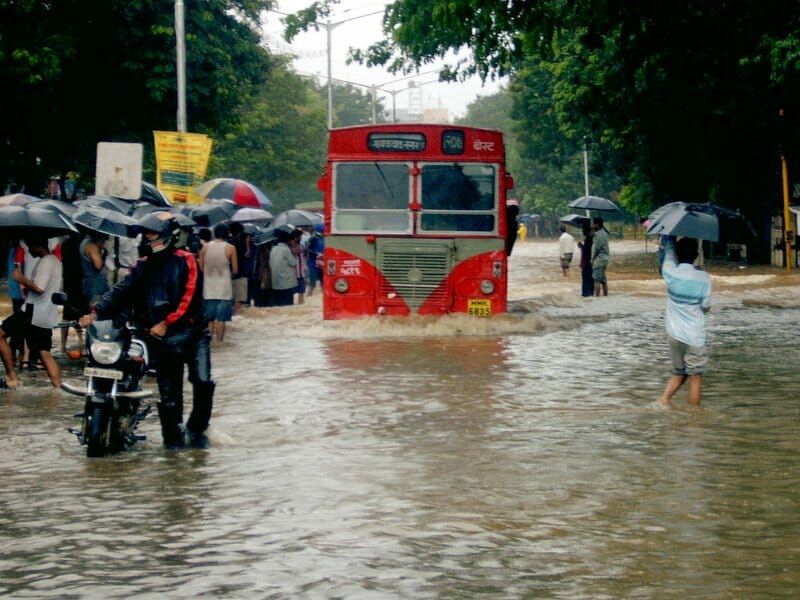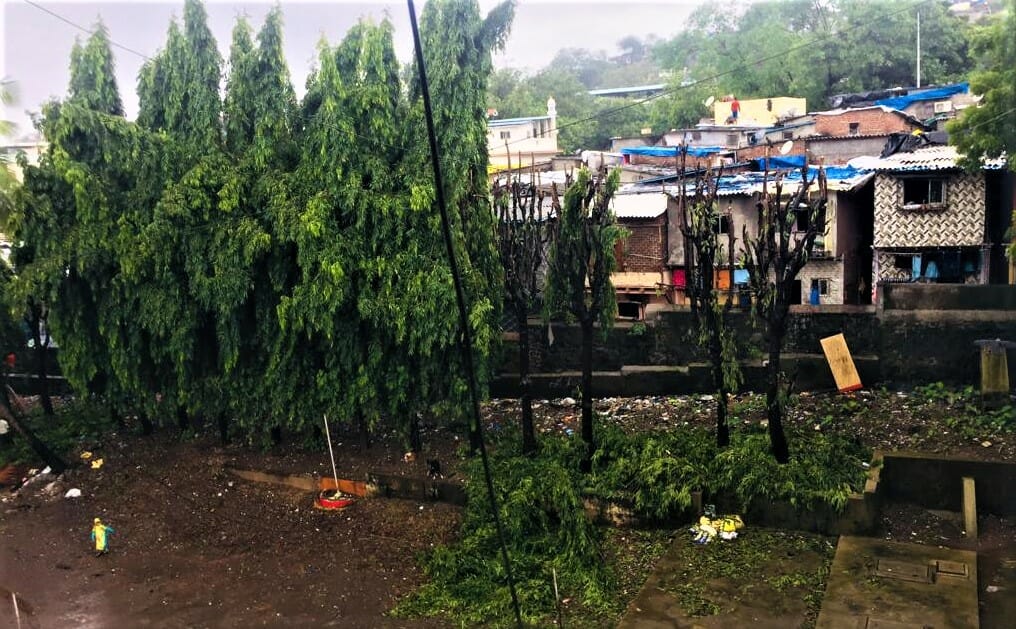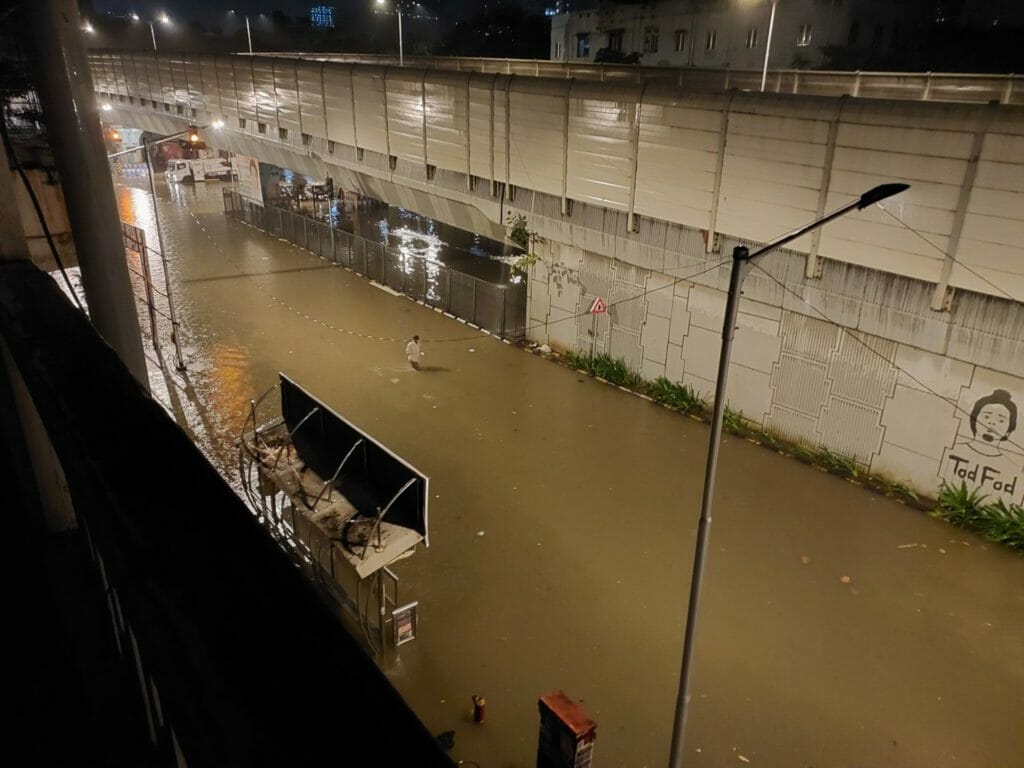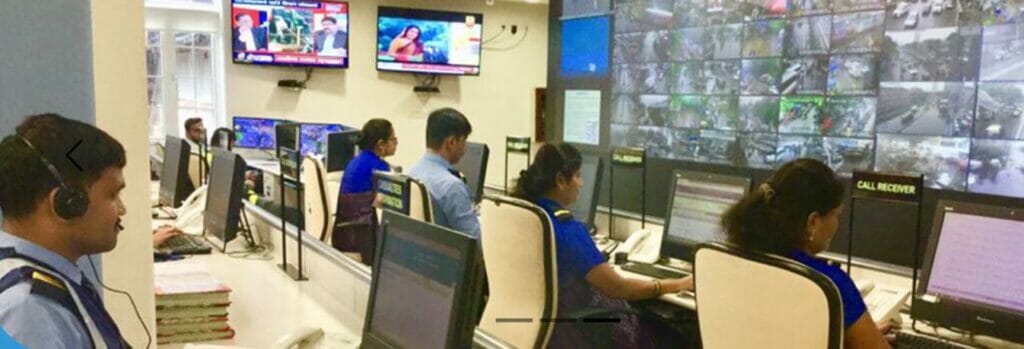Amid the relentless downpour last week, Dnyaneshwar Paugul, accompanied by his daughter, Yogita, and 6-month-old granddaughter, were travelling from Mumbai city to Bhiwandi after seeking treatment for the little one at KEM hospital. As the local train made its way through the suburbs, heavy rains continued and soon the train stopped between Thakurli and Kalyan on flooded railway tracks.
With no sign of the train moving, impatience and anxiety began to rise among the passengers. Some of them decided to get down and walk towards the nearest railway station. Among them were Paugul and his daughter, who held her ailing baby wrapped in a blanket.
As they stepped onto the slippery tracks, trying to navigate their way, they began walking on a narrow bridge with a stream carrying a strong current flowing below them. In a sudden, heart-stopping moment, Yogita’s foot slipped on the slippery surface, causing her to lose her balance.
Instinctively, Paugul reached out to grab the baby from his daughter’s arms, trying to shield her from harm. However, a few moments later, Paugul also lost his footing, and to his horror, the baby slipped out of his raincoat and was swept away by the strong current of the stream.
The government railway police rushed to the site, accompanied by local volunteers, who joined the rescue operation. Despite their relentless efforts and two days of searching, the baby’s body was not found, leaving the family devastated by the tragedy. In a video that went viral after the incident, the father and daughter were seen near the railway track mourning the baby’s loss.
“It’s such a tragic loss. My daughter lost her child. The incident has left us in a state of shock,” Paugul, told Citizen Matters over phone.
This incident is a grim reminder of the challenges posed by the monsoon season in Mumbai. The city becomes a hotspot for accidents, some fatal, with road accidents, drowning, tree fall, house collapses, and more.

Record-breaking rainfall
This year’s monsoon has been particularly heavy, with July witnessing record-breaking rainfall. On July 26, the India Meteorological Department (IMD) reported that Mumbai had experienced its wettest July ever, with an astounding 1557.8 mm of rainfall recorded so far.
The previous wettest July on record was in 2020 when 1,502 mm of rainfall was logged by the IMD’s Santacruz observatory, IMD official Sushma Nair informed.
“Citizens are requested not to panic and take the necessary precautions while venturing outside throughout the monsoon season, especially during alerts,” she cautioned.
The incessant heavy rains led the weather department to issue a red alert for the second time in two weeks on Thursday, warning of very heavy to extremely heavy rainfall. As precautionary measures, schools and colleges were also shut on those days.

Read more : As monsoon intensifies, fear grips citizens living on the banks of Poisar river
Tragic monsoon accidents
According to the disaster management data of the Brihanmumbai Municipal Corporation (BMC), hundreds of monsoon-related accidents were recorded, including 478 incidents of tree or branch falling, 285 cases of short circuits, 94 instances of house or wall collapses and 5 cases of landslides, in June and July. These accidents claimed 13 lives and left more than 20 injured.
On the morning of July 16, five boys aged between 12 years and 16 years, who lived in the Malwani area, decided to explore Marve Creek in suburban Malad. Three of the boys went missing, and two were rescued by locals before the fire brigade arrived. The bodies of the other three boys were later recovered the following day with the assistance of coast guard and Navy divers.
While on July 11, around 3 pm on Daftary Road, Malad East, a tree branch fell on three people including a 70-year-old woman, a 46-year-old man and a 3-year-old boy. All three were rushed to the hospital, the elderly woman succumbed to her injuries.
On July 20, more than 100 individuals were relocated to a safer location after a landslide occurred in the Bhatwadi area of Ghatkopar. The landslide caused a large tree to fall on the roof of a nearby temple, prompting authorities to swiftly evacuate people from the surrounding area. Residents of 25-30 houses were relocated to a nearby municipal school for their safety.
In another incident, on July 23, a 45-year-old man died by electrocution due to an electric motor outside a building in Kalina, Santacruz East.

Reasons behind monsoon accidents
Mumbai is a low-lying coastal area, which makes it susceptible to frequent floods. Heavy rainfall, often exceeding the capacity of the drainage systems, leads to waterlogging in various parts of the city. Moreover, high tides during the monsoon can increase flooding.
Mumbai’s seafronts are densely populated and during monsoons the waves during high tides are strong enough to pull unsuspecting bystanders, often enjoying the weather and the sea.
Also, extensive reclamation projects and construction on natural water-absorbing surfaces, reduce the city’s ability to manage excess water. The reduced catchment area of the Mithi River, caused by encroachments and improper waste disposal, has also contributed to the increased risk of floods in Mumbai.
With continuous rains, roads become slippery, making riding and driving difficult and risky. Drivers have to take extreme caution, as waterlogged roads and sides can lead to accidents, with tires losing traction and causing mishaps.
Tree maintenance and pruning before the monsoon season start taking place by the BMC to minimise the risk of accidents caused by falling branches. The heavy rainfall during the monsoon adds additional weight to the branches, making them susceptible to breaking and falling, which poses a serious threat to public safety. Additionally, as the city has a low-lying nature, most of the roots of trees don’t go too deep since the water level is close to top soil, making the trees vulnerable during monsoon. Additionally, the gusty winds may uproot the trees, with weakened roots.
Moreover, wet conditions during rainfall increase the risk of accidental contact with live wires, leading to electrocution.
Similarly, landslides get triggered by heavy or prolonged rainfall which loosens the soil and causes it to slide downhill, taking everything in its path – trees and houses.

BMC’s Disaster Management
Considering the risks of accidents in heavy rains, we are doing everything in our capacity to cater to the citizens, says BMC’s additional commissioner, Dr Sudhakar Shinde. “With the National Disaster Response Force (NDRF) teams, fire brigade, and the traffic police on standby, we are ready to assist citizens during any monsoon-related emergencies.”
To enhance monitoring capabilities and to respond swiftly to any potential flooding situations, the BMC has installed 60 automatic rain gauges at 58 locations, which transmit real-time rainfall data to the Disaster Control Room of the BMC every 15 minutes. Many rain gauges have been placed at fire brigade stations, for 24-hour vigilance during disasters.
“Also, the BMC disaster management app plays a vital role in delivering timely alerts to citizens who have downloaded it,” emphasises the additional commissioner. “We encourage all citizens to download the app or visit our website to stay informed about weather updates and warnings. This will ensure the safety of themselves and their families during the monsoon season.”
Apart from being flood-prone for above-mentioned reasons, Mumbai is facing the impact of climate change. Climate change is altering the rainfall patterns, leading to more extreme and unpredictable weather events.
These intense downpours pose a significant threat to the city’s drainage systems and infrastructure, given Mumbai’s high population density. The sudden deluges can overwhelm the existing drainage networks, leading to severe flooding in many areas.
As climate change continues to influence weather patterns, the frequency and severity of such extreme events are likely to increase, making it crucial for the city to adapt its infrastructure and disaster preparedness to face these new challenges.
Individuals should prioritise their own safety, once orange and red alerts are issued by the BMC. Citizens can always check with the helpline or social media handles before venturing in heavy rains. Also, informing and asking for help from ward officers or corporators, can be useful in dealing with risks locally. Senior citizens and children are more vulnerable in floods and maybe advised to stay indoors.
However, the BMC and other governing bodies need to implement preventive measures and safety protocols, in the wake of increased risks. The need for heightened vigilance and safety precautions has never been more pronounced.
| For updates and disaster emergencies contact BMC’s Disaster Management Department Emergency Helpline 1916 WhatsApp +91-8999228999 Email : disastercontrol3@gmail.com Website : https://dm.mcgm.gov.in/ Download Disaster Management App : https://play.google.com/store/apps/details?id=com.disastermanagement.bmc&pli=1 |